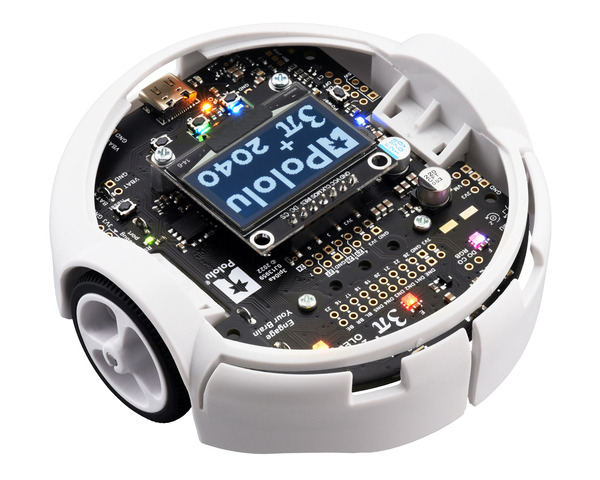

This is a merged information page for Item #5000.
View normal product page.
Pololu item #:
5000
Brand:
Pololu
Status:
Active and Preferred

The Pololu 3pi+ 2040 robot is a high-performance mobile platform based on the Raspberry Pi RP2040 MCU. Its many features include dual quadrature encoders for closed-loop speed/position control, line sensors, front bump sensors, a full IMU (3-axis accelerometer, magnetometer, and gyro), and a graphical OLED display. This Hyper Edition version is assembled with high-speed 15:1 HPCB 6V Micro Metal Gearmotors.
NOTE: This version is difficult to control and fast enough to damage itself from impacts, so it is only recommended for advanced users. A spare 15:1 gearbox is included.
Alternatives available with variations in these parameter(s): version assembled Select variant…
 Compare all products in 3pi+ 2040 Robot or
Compare all products in 3pi+ 2040 Robot or  Robot Kits without Soldering.
Robot Kits without Soldering.
 |
3pi+ 2040 Robot. |
|---|
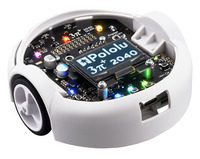 |
3pi+ 2040 Robot, rear view. |
|---|
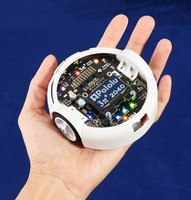 |
3pi+ 2040 Robot fits in the palm of a hand. |
|---|
 |
3pi+ 2040 Robot features. |
|---|
 |
3pi+ 2040 Robot, front view. |
|---|
 |
3pi+ 2040 Robot, side view. |
|---|
 |
3pi+ 2040 Robot, rear view. |
|---|
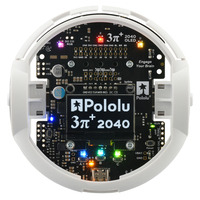 |
3pi+ 2040 Robot, top view. |
|---|
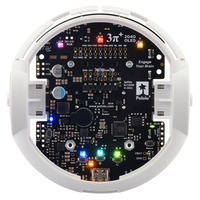 |
3pi+ 2040 Robot, top view with OLED display removed. |
|---|
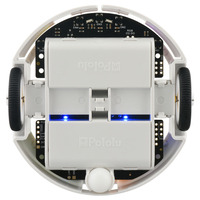 |
3pi+ 2040 Robot, bottom view. |
|---|
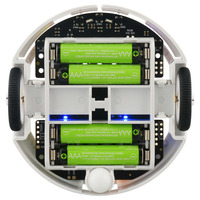 |
The 3pi+ 2040 Robot is powered by four AAA batteries (not included). |
|---|
 |
3pi+ 2040 Robot, bottom view with battery compartment covers removed. |
|---|
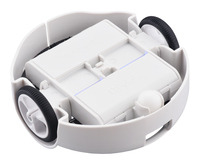 |
3pi+ 2040 Robot, bottom view. |
|---|
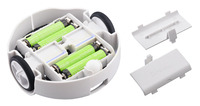 |
3pi+ 2040 Robot, bottom view with batteries installed (batteries not included). |
|---|
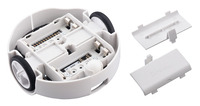 |
3pi+ 2040 Robot, bottom view showing the insides of the battery compartments. |
|---|
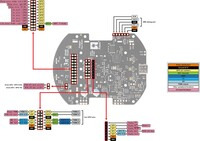 |
3pi+ 2040 Control Board pinout and peripherals. |
|---|
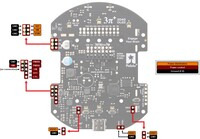 |
3pi+ 2040 Control Board power distribution and control. |
|---|
The 3pi+ 2040 is a versatile, high-performance, user-programmable robot that measures just 9.7 cm (3.8″) in diameter. At its heart is a Raspberry Pi RP2040 microcontroller (like the one on the Raspberry Pi Pico), a 32-bit dual-core Arm Cortex-M0+ processor running at 125 MHz, which can be programmed with C, C++, Arduino, or Python. The 3pi+ 2040 has 16 MB (128 Mbit) of flash memory that ships preloaded with a MicroPython interpreter, so you can get started right away by plugging into its USB C port and editing the included example Python programs. For advanced users who want to customize or enhance their robots with additional peripherals, the robot’s power rails, power system controls, and microcontroller’s I/O lines can be accessed via several 0.1″-pitch expansion ports.
|
|
|
The 3pi+ (or 3𝜋+) 2040 features two H-bridge motor drivers and a variety of integrated sensors, including a pair of quadrature encoders for closed-loop motor control, a complete inertial measurement unit (3-axis accelerometer, gyro, and magnetometer), five downward-facing reflectance sensors for line-following or edge-detection, and left and right bump sensors along the front face of the robot. Three on-board pushbuttons offer a convenient interface for user input, and a 128×64 graphical OLED display, buzzer, and six RGB LEDs allow the robot to provide feedback.
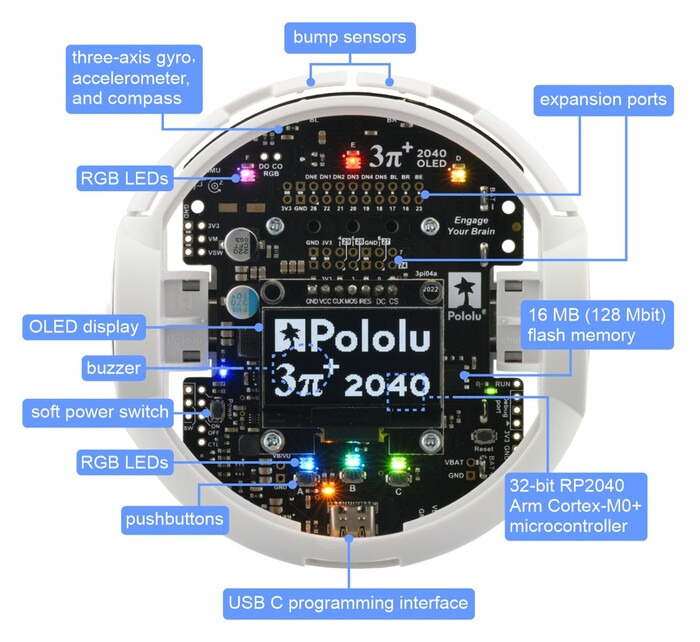 |
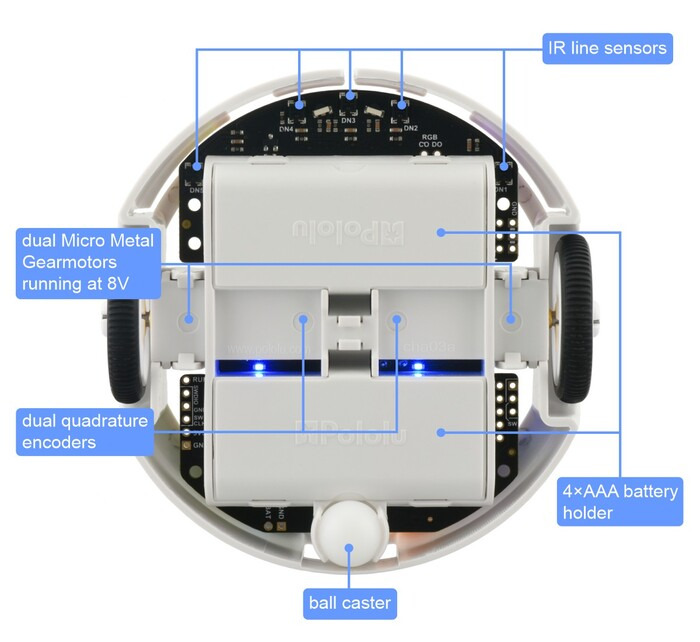 |
The robot also features a unique power system that runs the motors at a constant 8 V independent of the battery charge level, so the speed of the motors does not vary with the battery voltage.
The 3pi+ 2040 robot is available as a kit or fully assembled:
| 3pi+ 2040 Version | Products | Micro Metal Gearmotor | Top Speed | Comments |
|---|---|---|---|---|
| Standard Edition | assembled or kit | 30:1 MP 6V | 1.5 m/s | good combination of speed and controllability |
| Turtle Edition | assembled or kit | 75:1 LP 6V | 0.4 m/s | longest battery life, easiest to control, good for swarm robots or introductory robotics courses |
| Hyper Edition | assembled or kit | 15:1 HPCB 6V | ~4 m/s | very fast and difficult to control, easy to damage; only recommended for advanced users |
For those who would prefer to use different motors than these versions above, the 3pi+ chassis and 3pi+ 2040 control board are available separately and can be combined with a pair of motors to make a custom kit.
The following video shows the steps to assemble a different version of the 3pi+ robot (the 3pi+ 32U4 OLED robot), but these steps generally remain the same for the 3pi+ 2040:
This product is the assembled Hyper Edition of the 3pi+ 32U4 OLED Robot. It is very difficult to control and fast enough to damage itself from impacts, so it is only recommended for advanced users. We strongly recommend keeping motor speeds below 50% on this version. A spare gearbox is included with this edition and instructions for installing it can be found here (note that this video was made for an older version of the 3pi+ robot, but the mechanical instructions for replacing the gearbox still apply to this newer 2040 version).
|
|
A kit version of this robot is also available.
| Size: | 97L × 96W × 36H mm |
|---|---|
| Weight: | 100 g1 |
| Processor: | RP2040 @ 125 MHz |
|---|---|
| RAM size: | 264 Kbytes |
| Program memory size: | 16 Mbytes |
| External programmer required?: | N |
| Assembled: | Y |
| Version: | Hyper Edition (15:1 HPCB Motors) |
| PCB dev codes: | 3pi04a |
|---|---|
| Other PCB markings: | 0J13959 |
User’s manual for the Pololu 3pi+ 2040 robot.
This file contains 3D models (in the STEP file format) of the 3pi+ 2040 Robot. These models use a simplified model of the control electronics to reduce the file size. A more detailed model of the 3pi+ 2040 Control Board (27MB step) is available separately.
This file contains 3D models (in the STEP file format) of the 3pi+ Chassis Kit. Note that the models include micro metal gearmotors that are sold separately from the chassis.
These DXF drawings make it possible to get various dimension measurements of the 3pi+ 2040 Robot.
This DXF drawing shows the locations of all of the board’s holes.
This repository contains libraries and example code for the Pololu 3pi+ 2040 Robot in MicroPython and C.
A full-featured Arduino library for the Pololu 3pi+ 2040 Robot developed by customer Adam Green.
No FAQs available.
We have transitioned from our initial early-adopter release to a full release of the 3pi+ 2040 Robot family! With the full release, we also have...